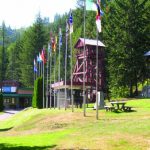Column: From the Hill -- Small Modular Reactors
Earlier this year, Seamus O’Regan, the Minister of Natural Resources said in a speech that “We are placing nuclear energy front and centre… This is nuclear’s moment.” And in discussions around building a new economy after COVID, the government is doubling down on those sentiments. The latest debates are slightly different from those of the last fifty years as they involve a new technology: Small Modular Reactors, or SMRs. Spoiler alert–I don’t necessarily share the Minister’s unbridled enthusiasm for nuclear energy as the answer to all our prayers.
Nuclear power has—for good reason—always elicited strong opinions. On the positive side, like hydro, it produces steady, baseload power essentially free of greenhouse gas emissions. On the other hand, the impacts of rare accidents are famously catastrophic. And there has been no permanent solution developed for the disposal of nuclear waste in Canada, a problem that will be with our species for hundreds of thousands of years.
Right now, nuclear power produces 60 percent of Ontario’s electricity needs and most of New Brunswick’s. Quebec had a nuclear power plant but shut it down eight years ago when faced with the prospect of the multibillion-dollar cost for a needed upgrade. Canada was once a world leader in terms of nuclear power research and development with the development of the CANDU reactor, but in 2011 the Harper government sold off that technology to SNC Lavalin.
So, can nuclear power help us in our efforts to significantly reduce greenhouse gas emissions within the next few years? SMRs represent an experimental technology that, according to industry experts, will not be producing power anywhere in Canada for about a decade. Once the technology matures and SMRs can be produced in quantity, they could theoretically be cheaper than present, very expensive nuclear plants. But those claims are very difficult to assess.
SMRs are often touted as a solution to get remote indigenous communities off diesel power. While I am very much in favour of helping these communities find alternate power sources, SMRs do not fit the bill. These communities want power generation solutions that they can build and manage themselves. They want alternative power sources now, not in ten years. And they do not want to be the guinea pigs for brand-new nuclear technology that will likely provide few jobs for local residents and cost significantly more than mature technologies such as solar, wind, and bioenergy. A Special Chiefs Assembly of the Assembly of First Nations passed a unanimous resolution in December 2018 demanding “that the Government of Canada cease funding and support of the Small Modular Nuclear Reactors program.”
Canada has a long way to go to reduce its greenhouse gas emissions and meet its Paris targets. Existing nuclear plants will help in that regard, and I am certainly not calling for their closure. SMRs may one day play a role in specific energy solutions, but they shouldn’t be relied on by present day governments as the panacea to a clean energy future. Even the Canada Energy Regulator (formerly the National Energy Board) predicts that SMRs will collectively contribute only the equivalent of half of a conventional hydro dam by 2050.
To reach meaningful targets by 2030 and 2040, we need to double down on technologies we know will get us there. Existing hydro, nuclear, and emerging storage technologies, in conjunction with renewable energies such as wind, solar, and geothermal, can provide reliable power. And energy efficiency efforts alone could get us almost half-way to our targets. These are the routes to success.























